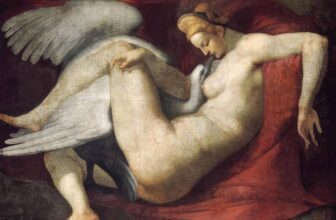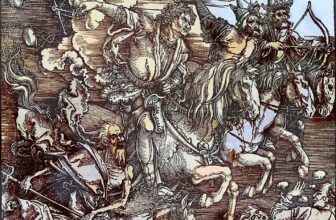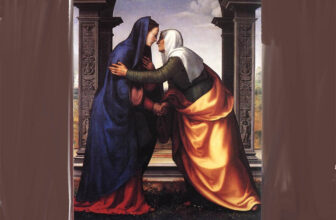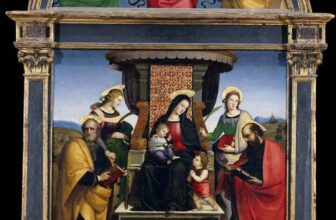Most Famous Paintings of Antonio Allegri da Correggio
Shopping Ads: Invest in Hidden Masterpiece: Rare Antique Oil Paintings For Sale. Limited Originals Available 💰😊 Are you looking for authentic hidden masterpiece? Explore old master antique oil paintings from the Renaissance and Baroque eras. From 16th-century portraits to 18th-century landscapes. Authenticity guaranteed, Old Master antique oil paintings for sale. Shop Now! 🎨 Renaissance And Baroque Art Old Master Portrait Paintings Landscape Antique PaintingsIn the quiet, rolling hills of northern Italy, in the small town of Correggio, a genius was born around 1489. His name was Antonio Allegri, but the world would come to know him simply as Correggio, a name synonymous with light-drenched compositions, celestial beauty, and sensuous religious art. While he may not be as universally known as Leonardo da Vinci or Michelangelo, Correggio’s contribution to Renaissance painting is no less profound. His ethereal frescoes, dynamic use of foreshortening, and masterful blending of classical and Christian themes earned him a place among the pantheon of Italy’s greatest artists.
This is the story of Antonio Allegri da Correggio, his art, his legacy, and the masterpieces that made him immortal.
A Painter Ahead of His Time
Antonio Allegri was born in Correggio, a small town near Parma in the Emilia-Romagna region of Italy. Unlike many of his contemporaries, Correggio didn’t apprentice in a major city or studio in his youth. Instead, he received local training, possibly under Francesco Bianchi Ferrara. While Correggio never left northern Italy, his works show a profound awareness of and innovation beyond the Florentine and Roman traditions.
Correggio’s style is difficult to pigeonhole. He was a bridge between the High Renaissance and the Baroque, a visionary who introduced new techniques that would later inspire artists like Caravaggio, Rubens, and Rembrandt. His work is characterized by a vivid use of chiaroscuro, sensuality, dynamic compositions, and a deeply emotional connection to his subjects.
What Is Antonio Allegri da Correggio Known For?
Correggio is best known for his dramatic ceiling frescoes, his mastery of illusionistic perspective, and his ability to depict the human body in motion. He had a gift for capturing spiritual ecstasy and divine grace in physical form, often rendering sacred subjects with palpable sensuality, a style that was daring, if not controversial, for his time.
He is considered a pioneer in the technique of di sotto in su (“from below upward”), where figures painted on ceilings appear to hover or ascend above the viewer. His mastery of light and shadow gave depth to his scenes and created a heavenly, floating effect that left an indelible impact on the history of Western art.
Though his career was tragically cut short, he died in 1534 at just 44, Correggio left behind a breathtaking body of work. Some of his most famous paintings include:
1. Assumption of the Virgin (1526–1530)
Located in the Cathedral of Parma, this monumental ceiling fresco is considered Correggio’s magnum opus. The composition spirals upward in a vortex of angels and clouds, with the Virgin Mary ascending toward the light. It’s a dazzling spectacle of illusionistic perspective and movement. This fresco redefined ceiling decoration and became a precursor to Baroque ceiling art.
2. Jupiter and Io (c. 1531–1532)
Now housed in the Kunsthistorisches Museum in Vienna, this oil painting is part of Correggio’s “Loves of Jupiter” series, depicting sensual episodes from Ovid’s Metamorphoses. Here, the god Jupiter seduces the nymph Io, transforming himself into a mist to embrace her. The work is celebrated for its eroticism, softness of form, and emotional intensity.
3. Danaë (c. 1531)
Another entry in the “Loves of Jupiter” series, Danaë is a stunning blend of mythological storytelling and sensual grace. Zeus descends as golden rain to impregnate the mortal woman Danaë. The painting, now in the Galleria Borghese in Rome, is an example of Correggio’s ability to combine divine myth with tactile human emotion.
4. The Mystic Marriage of Saint Catherine (c. 1520)
This work, located in the Louvre Museum, captures the spiritual union of Saint Catherine and Christ in a tender, almost maternal gesture. The luminous figures, balanced composition, and serene background are quintessentially Correggian.
5. Adoration of the Magi (c. 1515–1518)
Found in the Pinacoteca di Brera in Milan, this painting is an exquisite representation of the biblical scene, filled with dynamic gestures, vibrant drapery, and emotional intensity. It shows Correggio’s deep understanding of the human psyche and divine narrative.
6. The Camera di San Paolo Frescoes (1519)
Commissioned by Abbess Giovanna da Piacenza, this room in the Convent of San Paolo in Parma showcases Correggio’s playful side, with mythological and classical themes painted across a domed ceiling. Nymphs, cherubs, and hunting scenes fill the room with a sense of joy and freedom that was ahead of its time.
How Many Paintings Did Correggio Create?
While it is difficult to pinpoint the exact number due to attributions and lost works, art historians generally credit around 40 to 50 major paintings and frescoes to Correggio. These include altarpieces, mythological scenes, devotional works, and ceiling frescoes.
His relatively small oeuvre is due in part to his early death and the complexity of his larger commissions, which took years to complete. Nevertheless, the quality and innovation in each work make his legacy incredibly significant.
The Most Expensive Painting by Correggio
Unlike modern artists, Correggio’s works did not command millions during his lifetime. However, in today’s art market, paintings attributed to Correggio are rare and extremely valuable. The most expensive known sale involving Correggio was not recent, his works are mostly in museums and national collections, making them unavailable for auction.
However, in terms of insurance and cultural value, “Jupiter and Io” and “Danaë” are likely the most valuable due to their historical significance, condition, and the institutions that hold them. Art experts have speculated that, were one of these works ever to be sold (a highly unlikely event), it could fetch tens of millions of dollars.
Where Are Correggio’s Paintings Located Today?
Correggio’s masterpieces are spread across some of the most prestigious museums and churches in Europe, including:
Cathedral of Parma (Italy) – Assumption of the Virgin
Convent of San Paolo, Parma (Italy) – Camera di San Paolo frescoes
Galleria Borghese, Rome – Danaë
Kunsthistorisches Museum, Vienna – Jupiter and Io
Louvre Museum, Paris – Mystic Marriage of Saint Catherine
National Gallery, London – Ecce Homo and The Madonna of the Basket
Uffizi Gallery, Florence – Various religious works and early pieces
Pinacoteca di Brera, Milan – Adoration of the Magi
Hermitage Museum, St. Petersburg – Leda and the Swan
Art Institute of Chicago – The Rest on the Flight into Egypt
His presence in these grand institutions speaks volumes about the value of his contribution to the art world.
Legacy of Antonio Allegri da Correggio
Correggio’s legacy is both artistic and philosophical. He redefined how heaven and earth could be connected through art. He dared to combine myth with faith, light with shadow, and flesh with spirit. His techniques would influence the Baroque masters and the Rococo romantics, both in Italy and across Europe.
Perhaps his greatest legacy lies in his ceiling frescoes, where he brought the heavens to the people, making the divine visible, tactile, and close. The swirling vortex of angels in the Parma Cathedral would go on to inspire countless artists in the Baroque period, most notably Giovanni Lanfranco, Guercino, and Giovanni Battista Tiepolo.
Despite being somewhat overshadowed by the more famous Renaissance titans, Correggio is remembered by scholars and connoisseurs as a genius of light, movement, and emotion. His exploration of human tenderness, divine ecstasy, and mythological beauty gave the Renaissance a softness and sensuality that is uniquely his.
A Quiet Genius with a Radiant Voice
Unlike the flamboyant Michelangelo or the enigmatic Leonardo, Correggio lived a relatively quiet life. There are no dramatic stories of papal commissions or court rivalries. Instead, his life was dedicated to his work, and his art speaks with clarity and emotion that transcend the centuries.
He died in 1534, possibly of fever, and was buried in his hometown of Correggio. But in truth, he never left. His name became a signature not just of a place, but of a style, a sensibility. The artist from a small town who never set foot in Rome would go on to revolutionize the way we imagine the sky.
Antonio Allegri da Correggio was not just a painter, he was a visionary who made the heavens tangible and brought mythological passion into the sacred realm. With fewer than fifty paintings, he changed the trajectory of Western art. His work whispers of divinity, dances with shadow and light, and invites viewers into a world of grace, sensuality, and awe.
If you stand beneath the dome of Parma Cathedral and look up, you’ll feel it, that moment where time dissolves, and angels spin above you in eternal ecstasy. That is the magic of Correggio.
Further Reading & Viewing Recommendations:
Visit the Galleria Borghese (Rome) or Kunsthistorisches Museum (Vienna) online to explore Correggio’s mythological works.
Study the ceiling of Parma Cathedral through virtual 3D models for an immersive experience.
Books: “Correggio and Parmigianino: Art in Parma During the Sixteenth Century” by David Ekserdjian offers excellent scholarly insight.




